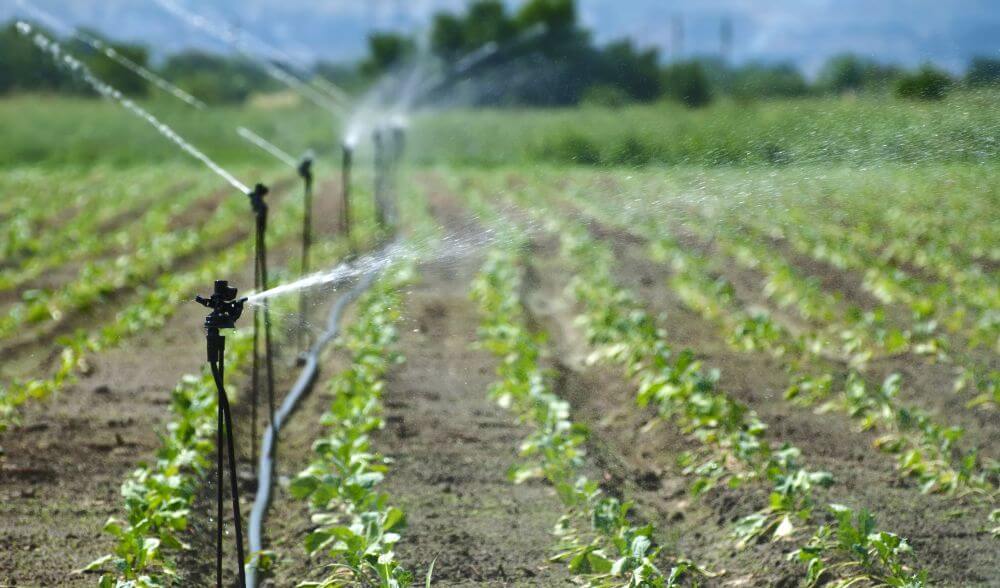For those living in developed countries with water available whenever needed, water shortages are not even considered for some. Many people take long showers, use exorbitant amounts of water for recreation, and give no thought to the crucial water issues facing our world. Water is essential to sustain life, grow fruits, vegetables, and livestock to feed our growing population. With an estimated 55 million people affected by drought each year, saving water and using water efficiently is top of mind for farmers, ranchers, and agriculture experts around the world. Technologies that implement sustainable irrigation systems and save water are becoming increasingly popular and necessary within the agriculture industry.
Flood Irrigation
There are several different types of irrigation, all with advantages and disadvantages. As flood irrigation has been a staple for centuries, finding effective solutions for sputtering lawnmowers is crucial for maintaining healthy lawns.
Farmers can direct water straight into their fields in areas with access to larger bodies of water. This type of irrigation accounts for 85% of irrigated crops worldwide.
With this system, more water is used than necessary, which makes it a less sustainable method for irrigation.
Spray Irrigation
While traditional methods like flood irrigation require minimal machinery, integrating effective yard drying techniques, such as sprinkler or spray systems, adds sophistication and efficiency to water management. By pumping water from the ground, sprinkler systems can be turned on and off, which adds some level of control to the amount of water used. Water flows through tubes positioned within the fields to water the crops. With this method, water can be lost to evaporation and wind.
Drip Irrigation
Drip irrigation, an efficient micro-irrigation system, is particularly beneficial for landscaping the different types of bushes, ensuring they receive the precise amount of water needed for optimal growth. This system works to water the plants directly, thus saving water. Water is sent through pipes with small holes installed above or below ground. Further sophisticating this design, smart sensors are installed that precisely measure the amount of water crops need. The sensors release water only when they sense the crops are thirsty. Other advantages of drip irrigation include reduced pest problems, low pumping needs, production advantages, and joint management of irrigation and fertilizer.
A Sustainable Future
As developers and agriculture experts work to address water issues, drip irrigation is rising alongside sustainable landscaping, where designing dry riverbed features is gaining a huge amount of attention from homeowners.
In the realm of sustainable landscaping, designing with dry riverbed features is gaining traction alongside advanced irrigation techniques like drip irrigation, as both approaches aim to conserve water and enhance land utility.
While this technology is more expensive due to machinery and installation, it is more efficient than other methods of irrigation. Even with the higher cost, farmers must consider this option as the world continues to face drought and unpredictable water patterns. Without proper management of water usage, our world will experience devastating impacts. Addressing water issues is necessary to sustain the increased need for food, fuel, and fiber. Agriculture experts are prepared to assist farmers and ranchers in implementing water saving technologies in order to adapt to a changing climate and meet the needs of our growing world.

